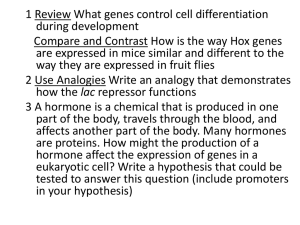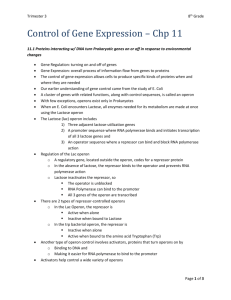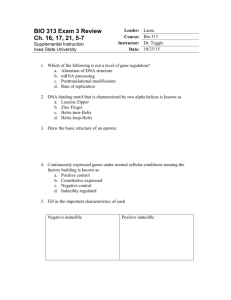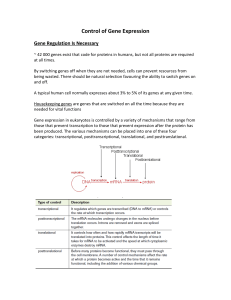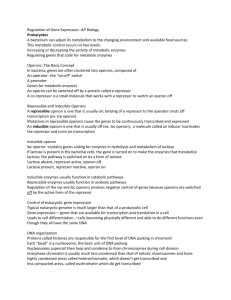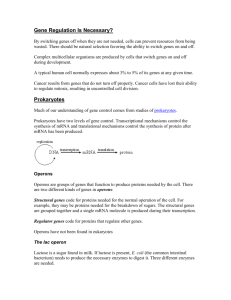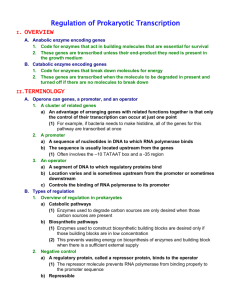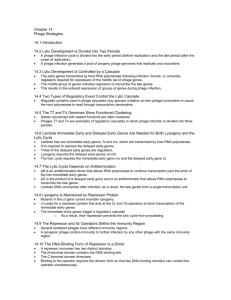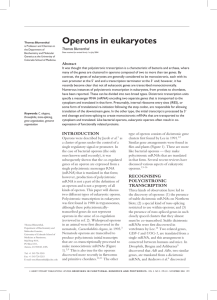File - Mrs. LeCompte
advertisement
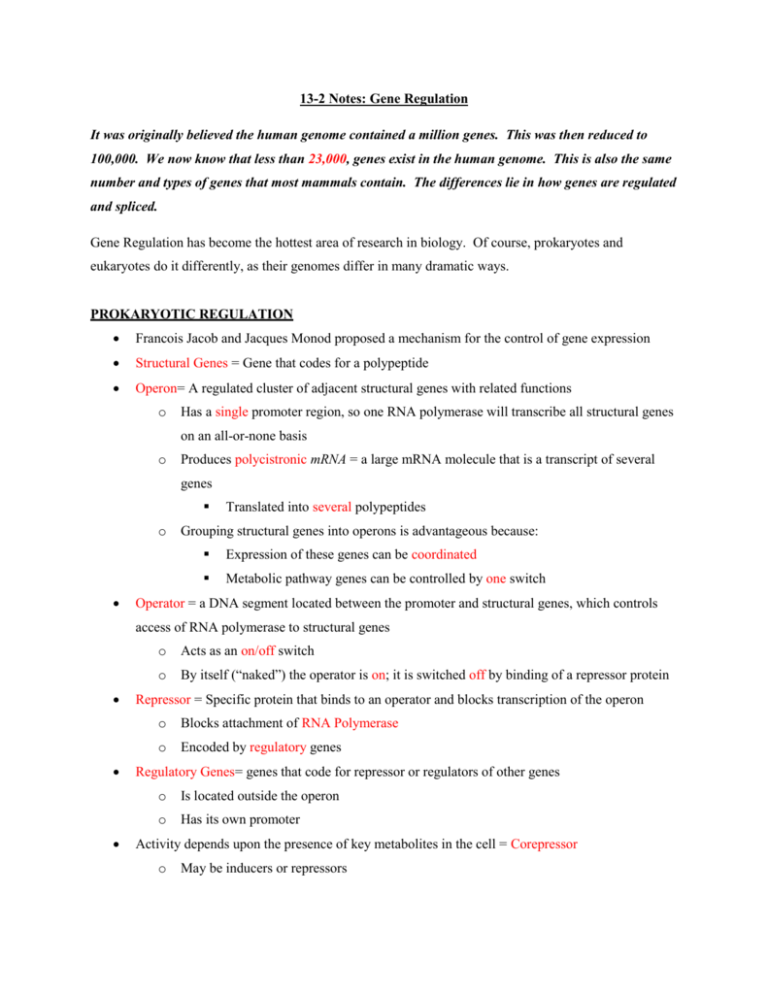
13-2 Notes: Gene Regulation It was originally believed the human genome contained a million genes. This was then reduced to 100,000. We now know that less than 23,000, genes exist in the human genome. This is also the same number and types of genes that most mammals contain. The differences lie in how genes are regulated and spliced. Gene Regulation has become the hottest area of research in biology. Of course, prokaryotes and eukaryotes do it differently, as their genomes differ in many dramatic ways. PROKARYOTIC REGULATION Francois Jacob and Jacques Monod proposed a mechanism for the control of gene expression Structural Genes = Gene that codes for a polypeptide Operon= A regulated cluster of adjacent structural genes with related functions o Has a single promoter region, so one RNA polymerase will transcribe all structural genes on an all-or-none basis o Produces polycistronic mRNA = a large mRNA molecule that is a transcript of several genes o Translated into several polypeptides Grouping structural genes into operons is advantageous because: Expression of these genes can be coordinated Metabolic pathway genes can be controlled by one switch Operator = a DNA segment located between the promoter and structural genes, which controls access of RNA polymerase to structural genes o Acts as an on/off switch o By itself (“naked”) the operator is on; it is switched off by binding of a repressor protein Repressor = Specific protein that binds to an operator and blocks transcription of the operon o Blocks attachment of RNA Polymerase o Encoded by regulatory genes Regulatory Genes= genes that code for repressor or regulators of other genes o Is located outside the operon o Has its own promoter Activity depends upon the presence of key metabolites in the cell = Corepressor o May be inducers or repressors Corepressor = a molecule, usually a metabolite, that binds to a repressor protein, causing the repressor to change into its active conformation Negative Controls Repressible operons = operons which can have their transcription inhibited. Usually associated with anabolic processes, (e.g., trp operon See diagram). Inducible operons = operons which can have their transcription stimulated. Usually associated with catabolic processes. (e.g. lac operon See diagram). Positive Controls Positive control = an activator molecule interacts directly with the genome to increase the rate of transcription Ex. In the lac Operon o Cyclic AMP (cAMP) builds up in bacterial cells when glucose is absent o Binds to CAP (catabolite activator protein) o The CAP/cAMP complex binds to the CAP binding site next to the lac operon o This bends the DNA, exposing the promoter to RNA polymerase, which makes it easier for RNA polymerase to bind This increases the rate of transcription, so its production increases tremendously when glucose is absent o When glucose is present, the lac operon may still be induced to be on, but does not get transcribed nearly as quickly. (Cells prefer to metabolize glucose.) o CAP affects other operons in the same way


